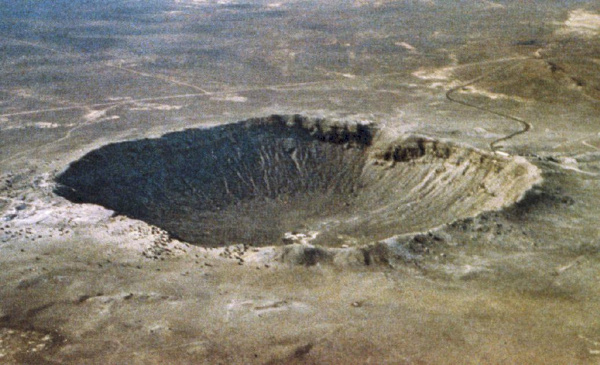| Tikalon Blog is now in archive mode.
An easily printed and saved version of this article, and a link
to a directory of all articles, can be found below: |
|
This article |
| Directory of all articles |
Let's Agree to Disagree
June 4, 2010
One of my past specialties was crystal growth. When I was offered a job in this area, fresh from a post-doctoral appointment investigating the
magnetic,
superconducting, and
other properties of
rare-earth alloys, my only knowledge of crystal growth was from an undergraduate textbook [1]. Worse than that, it was a single photograph in that book showing a young man puffing on a pipe while examining a
cesium iodide single crystal being grown from a melt. Cesium iodide is an important
scintillator crystal that's easy to grow from its liquid, since it has a melting point of 621
oC. Of course, what I learned as a materials scientist is just the right stuff to do crystal growth, so I accepted the position and actually did become a crystal grower. It was an interesting occupation, since crystal growers come from diverse backgrounds, and they tend to be a lot of fun at parties.
One of my first papers in the area of crystal growth was an application of some
thermodynamics I had used in my school days to a particular problem of how the composition of a growing crystal relates to the liquid from which it crystallizes [2]. Aside from the motivation that this theory would help me grow better crystals, I always wanted to write a paper that used the phrase, "
partition function." The fundamental problem of using thermodynamics to describe crystal growth is that thermodynamics describes
reversible processes, only, and crystal growth is an
irreversible process. My idea to get around this problem was to extrapolate things to zero growth rate. I did some experiments, and my theory seemed to work.
At a conference subsequent to publication of my paper, I was talking with one of the most respected people in the field of crystal growth. He had read my paper, but he didn't think it was a valid approach. Sure, there was nothing
wrong with the paper, but he didn't think it would give useful results for all crystals, just for the subset that I was using. This conversation highlights an important part of science. Scientists disagree with each other all the time. Even when they have the same data, they might have different interpretations of the data.
Einstein and
Niels Bohr never agreed about the fundamental interpretation of
Quantum Mechanics. Non-scientists are often confused about this aspect of science. In the case of
global warming, where scientific disagreements run deep, it appears to the public that global warming is not verified; or, worse yet, that it's a
hoax.
A recent issue of Science has a series of multi-author letters written by scientists who disagree with each other about the origin of the extinction event that happened at the end of the
Cretaceous period [3-5]. The reason for this extinction, at the
boundary between the Cretaceous and
Tertiary periods, is still being debated. A front-running theory is that this extinction was caused by the meteor impact that produced the
Chicxulub crater. The crater left by this meteor impact in the Yucatán Peninsula is more than 110 miles (180 km) in diameter. The suspect meteor is conjectured to have been about six miles in diameter. For comparison,
Meteor Crater, Arizona (also called the Barringer Crater), is just 0.737 miles (1.186 km) in diameter.

Meteor Crater, Arizona. A mere fly speck compared to the Chicxulub crater.
The letters in Science refute the idea that this single event caused the extinction.
Volcanic activity and
climate change are cited as other important factors. One letter [3] further states that there are many other mass extinctions found in the
fossil record, none of which are associated with a meteor impact. So, once again, scientists have agreed to disagree.
References:
- Charles Kittel, Introduction to Solid State Physics (Fourth Edition), John Wiley and Sons, Inc (New York, 1971), p.7.
- D.M. Gualtieri, Flux Growth of (Ca,Ge)-Substituted Rare- Earth Iron Garnets in the Regular Solution Approximation, J. Appl. Phys. 50, 2170-2172 (1979).
- J. David Archibald, W. A. Clemens, Kevin Padian, Timothy Rowe, Norman Macleod, Paul M. Barrett, Andrew Gale, Pat Holroyd, Hans-Dieter Sues, Nan Crystal Arens, John R. Horner, Gregory P. Wilson, Mark B. Goodwin, Christopher A. Brochu, Donald L. Lofgren, Stuart H. Hurlbert, Joseph H. Hartman, David A. Eberth, Paul B. Wignall, Philip J. Currie, Anne Weil, Guntupalli V. R. Prasad, Lowell Dingus, Vincent Courtillot, Angela Milner, Andrew Milner, Sunil Bajpai, David J. Ward, and Ashok Sahni, "Cretaceous Extinctions: Multiple Causes," Science, vol. 328, No. 5981 (21 May 2010), p.973.
- Vincent Courtillot and Frédéric Fluteau, "Cretaceous Extinctions: The Volcanic Hypothesis," Science, vol. 328, No. 5981 (21 May 2010), p.973f.
- Gerta Keller, Thierry Adatte, Alfonso Pardo, Sunil Bajpai, Ashu Khosla, and Bandana Samant, "Cretaceous Extinctions: Evidence Overlooked," Science, vol. 328, No. 5981 (21 May 2010), p.974f.
Permanent Link to this article